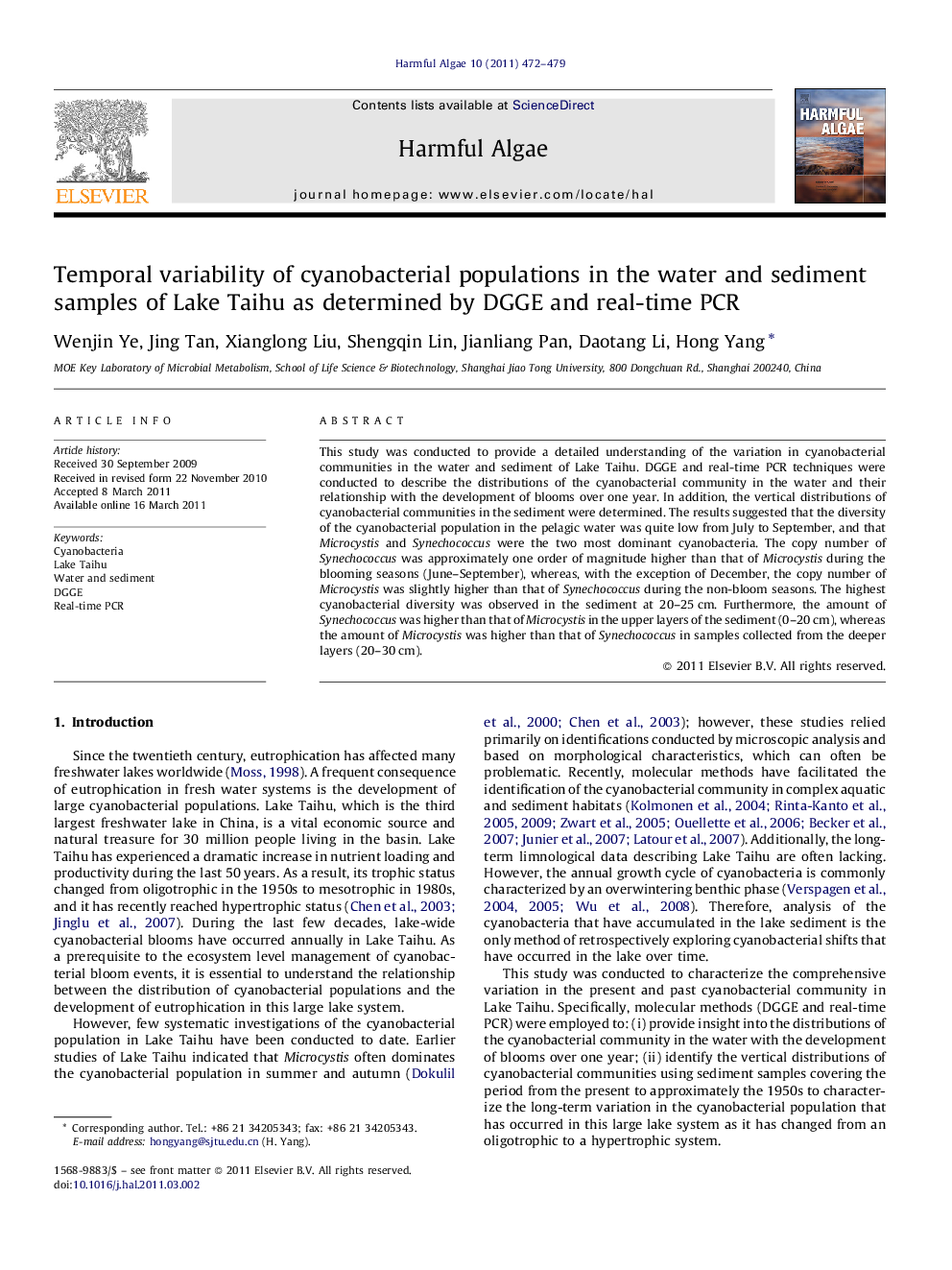| Article ID | Journal | Published Year | Pages | File Type |
|---|---|---|---|---|
| 4545742 | Harmful Algae | 2011 | 8 Pages |
This study was conducted to provide a detailed understanding of the variation in cyanobacterial communities in the water and sediment of Lake Taihu. DGGE and real-time PCR techniques were conducted to describe the distributions of the cyanobacterial community in the water and their relationship with the development of blooms over one year. In addition, the vertical distributions of cyanobacterial communities in the sediment were determined. The results suggested that the diversity of the cyanobacterial population in the pelagic water was quite low from July to September, and that Microcystis and Synechococcus were the two most dominant cyanobacteria. The copy number of Synechococcus was approximately one order of magnitude higher than that of Microcystis during the blooming seasons (June–September), whereas, with the exception of December, the copy number of Microcystis was slightly higher than that of Synechococcus during the non-bloom seasons. The highest cyanobacterial diversity was observed in the sediment at 20–25 cm. Furthermore, the amount of Synechococcus was higher than that of Microcystis in the upper layers of the sediment (0–20 cm), whereas the amount of Microcystis was higher than that of Synechococcus in samples collected from the deeper layers (20–30 cm).
► The cyanobacterial communities were studied in the water and sediment of Lake Taihu. ► Microcystis and Synechococcus were the two most dominant cyanobacteria in Lake Taihu. ► The cyanobacterial diversity was quite low in the pelagic water during the blooms. ► The highest cyanobacterial diversity was observed in the sediment at 20–25 cm. ► Microcystis and Synechococcus showed specific distribution in the water and sediment.
